Birds of Thailand
Re: Birds of Thailand
Great photos laphanphon, thanks for sharing
-
laphanphon
- Guru

- Posts: 787
- Joined: Wed Jun 09, 2004 12:15 am
Re: Birds of Thailand
Thanks, still learning 
Re: Birds of Thailand
Love the one with the 'noisy' birds and the monitor lizard 
Championship Stoke City 3 - 0 Plymouth Argyle 



Points 48; Position 20
Points 48; Position 20
Re: Birds of Thailand
The below taken from Facebook, courtesy of Sombat Kongwithtaya. Silver-breasted Broadbills (Serilophus lunatus), known to inhabit Kaeng Krachan Nat’l Park and many other areas of Thailand and Southeast Asia.
https://en.wikipedia.org/wiki/Silver-breasted_broadbill
https://en.wikipedia.org/wiki/Silver-breasted_broadbill
Governments are instituted among Men, deriving their just powers from the consent of the governed. Source
Re: Birds of Thailand
Thai cranes make comeback
A few photos at link: https://www.bangkokpost.com/thailand/sp ... e-comeback
Thongphun Un-chit could not believe his eyes when he spotted a Thai crane foraging for food in a neighbour's rice field in Buri Ram's Muang district back in 2011.
The last reported sighting of a Thai crane -- also known as the Eastern Sarus crane -- which is native to the area along the Thai-Cambodian border, was back in 1968, when Mr Thongphun was only eight years old.
"It looked very friendly and it didn't seem to be afraid of me," recalled the village head of Ban Sawai So.
Since then, there have been more sightings of the crane, which was thought to be extinct in Thailand, thanks to the Zoological Park Organisation (ZPO)'s tireless conservation efforts.
"I think it's destiny. One good action attracts more good things," Mr Thongphun said.
"And that's how the people and the crane meet again."
When Mr Thongphun first saw the crane, he was immediately taken by its majestic appearance. The village headman took out his mobile phone and captured the moment in a short video clip.
Mr Thongphun thought he saw a rare Thai crane, but he could not be totally certain of his guess. So he posted the clip on social media, complete with a plea to anyone who could tell him what bird it was.
He then received a reply from the ZPO.
A ZPO officer explained the bird he filmed was most probably one of the 10 Thai cranes which the Nakhon Ratchasima Zoo had bred and released into the wild.
One may have flown over to Buri Ram and landed on the rice field in Ban Sawai So, the officer said.
"I was so thrilled to hear that," he said.
Mr Thongphum could still remember the story he was told as a child, when Thai cranes were still a common sight in Buri Ram and its surrounding provinces.
He never actually saw the bird, nor heard anyone in the neighbourhood who had the privilege of sighting the cranes, dead or alive, until that fateful day in 2011.
"Suddenly, it was right there in front of me. My eyes were fixed on the bird for several minutes. It is still one of my greatest moments in my life," he said.
Thai cranes are among the 19 wildlife species protected by the 1992 Wildlife Protection Act. That said, because of the damage to their natural habitat, the species was believed to have gone extinct in the wild in Thailand.
The cranes' disappearance from its natural habitat led to efforts to breed the birds in captivity. Their disappearance kickstarted the International Crane Foundation's (ICF) breeding project, which began in 1982.
The breeding efforts were not successful at first.
Later in 1997, Nakhon Ratchasima Zoo invested in the construction of the country's largest crane breeding facility. In the following year, the zoo received its first pair of Thai cranes, donated by villagers along the Thai-Cambodian border for the zoo's crane breeding project, in which both natural and artificial breeding techniques were employed.
By 2007, a total of 100 Thai crane offsprings were bred. Four years later, the zoo was able to return the first batch of 10 Thai cranes, aged between five and eight years, to the wild.
The birds were released at Huai Chorakhe reservoir in Buri Ram's Muang district in 2011. The following year, nine more cranes were released at Sanambin reservoir in Prakhon Chai district of the province.
Nakhon Ratchasima Zoo also presented a pair of Thai cranes to His Majesty King Bhumibol the Great, which were kept at Chitralada Palace.
The late king later granted permission for the male crane to be mated with a female crane from the zoo. The offspring, which the late king named "Hoen Hao", was among the cranes returned to the wild at Huai Chorakhe reservoir.
So far, 115 Thai cranes bred in captivity by the ZPO have found new homes in the wild.
According to the ZPO, Thai cranes are not a migratory species. Native to Southeast Asia, the birds typically live with their mate until either of them dies. Their natural habitats are found close to shallow ponds and they feed on plants and small animals.
"Humans pose the biggest threat to Thai cranes' existence. The birds were hunted for their meat and eggs," said Mr Thongphun.
Hunting, however, has decreased considerably as conservation campaigns gained traction in recent years, raising public awareness about the dwindling population of the cranes, he said.
However, the threat remains as excessive use of chemicals in farming endanger both the birds and their prey. Chemical residue often gets washed into natural ponds, killing off plants and small animals which the cranes feed on.
Without sufficient food, the birds are forced to move elsewhere outside of their natural range.
Furthermore, conservationists found that drought puts pressure on the cranes' feeding areas.
Early last month, 10 more cranes were released by the ZPO to coincide with the opening of a centre for conservation of swampland and Thai cranes in Buri Ram.
The centre was established by the ZPO in conjunction with its partners including the Buriram Sugar Plc, Thai Airasia and other local organisations.
The purpose of the centre is to hammer home the critical message about the importance of conserving Thai cranes and their natural swampland habitat. Many swamps can also be developed as valuable ecotourism sites, which can also double as a public educational site for those interested.
True Corporation, a project partner, has developed a smartphone application called "Doo Nok" or "Bird Watch", which can be used to identify the variety of bird species who live near Huai Chorakhe reservoir.
Visitors can also use the application to access more than 500 additional photographs of local birds in the area, as well as information which has been compiled and verified to comply with professional and academic standards.
The app can be downloaded in both the iOS App store and Google Play store.
That said, app users are reminded to keep a distance of at least 200 metres from the birds during a sighting trip.
As the centre is expected to draw a large number of visitors, Buriram Sugar Plc, a project partner, is supplying the centre with biodegradable food containers made of sugarcane paper, which degrades 14 days after use.
Local residents have also voiced suggestions to take the environmental conservation cause even further.
Pratthana Ounchit, 49, president of a community enterprise group in Ban Sawai So, said a ban against littering at the centre should be put in place, as the birds may eat discarded food, or even plastic containers, which they cannot digest.
Governments are instituted among Men, deriving their just powers from the consent of the governed. Source
Re: Birds of Thailand
For those using Facebook, the below link has some great bird photos and video of birds from all over the world. In the "About" section of the page you'll find a link to their YouTube videos.
https://www.facebook.com/Birds.Lovers.1/
https://www.facebook.com/Birds.Lovers.1/
Governments are instituted among Men, deriving their just powers from the consent of the governed. Source
Re: Birds of Thailand
China has jailed and even executed people who poach and destroy within China. However it seems they turn a blind eye if the poaching is going on in other countries for the benefit of Chinese buyers. Is anyone surprised?
Time 'running out' for Thailand's dwindling hornbills
https://www.bangkokpost.com/thailand/ge ... -hornbills
Conservationists warn that time is running out for Thailand's dwindling population of helmeted hornbills, thanks to poaching of the exotic birds for the ivory-like casques atop their big yellow beaks.
Fewer than 100 of the birds are thought to be left in Thailand, and the species, known by the scientific name Rhinoplax vigil, is listed as "critically endangered'' by the International Union for Conservation of Nature.
Worries over its survival intensified after the wildlife trade monitoring group TRAFFIC posted photos online of dozens of skulls of the endangered avian for sale.
Conservation groups have launched a campaign on the change.org online petition site to pressure the government to add the bird to Thailand's Wildlife Preservation List as soon as possible.
Nineteen other species are currently on the list.
"Currently, there are fewer than 100 of the birds in Thailand's forests,'' said Kaset Sutacha, chairman of the Bird Conservation Society of Thailand and head of the Exotic Pet and Wildlife Clinic at Kasetsart University's faculty of veterinary medicine.
"Critically endangered'' is just a step away from "extinct in the wild'' and two steps from becoming considered "extinct.''
Demand from China is helping drive demand for their distinctive casques, "helmets'' in French, which males deploy in battle. The material is used to make rings, pendants and other decorative items.
Worries over the species' survival intensified after the wildlife trade monitoring group TRAFFIC recently posted photos online of dozens of skulls of the endangered avian for sale.
A campaign on the change.org online petition site is pressuring the government to add the bird to Thailand's Wildlife Preservation List as soon as possible. It now lists 19 other species.
The bird is already on Thailand's official list of protected animals, but would get much better protection if it's included in the Wildlife Preservation List, Dr Kaset said.
That "means we can get money, officers and tools from the government, including a national conservation plan designed just for this species,'' he said.
The population of the bird, found in Indonesia, Malaysia and parts of Myanmar and southern Thailand, is dwindling, the IUCN says.
Most types of hornbills have hollow casques. The helmeted hornbills' casques are a hard, solid block that in the illegal wildlife market is called "red ivory''.
The London-based Environmental Investigation Agency said black market prices are up to five times higher than for elephant tusks.
China appears to be the main market for helmeted hornbill parts and products, though there is also demand in Laos and Thailand, said Elizabeth John, TRAFFIC Southeast Asia's senior communications officer.
TRAFFIC has spotted at least 546 hornbill parts, mostly casques of helmeted hornbills, for sale on Thai Facebook groups in the past five years.
The Bird Conservation Society of Thailand has seen the number of helmeted hornbills depleted over the past 40 years by deforestation and climate change.
"If we let the poaching go on, it will wipe out the entire species in Thailand in no time,'' Dr Kaset said.
Preeda Tiansongrasamee, a researcher who has lived in Budo-Sungai Padi National Park in the Budo range in Narathiwat province for 20 years, said hunters traditionally sought helmeted hornbill casques and heads because they were thought to bring good luck.
"In the past, we could see heads of the bird in homes and people wore amulets made from casques,'' he said by phone. "That belief has faded away, but a new group of poachers has emerged who hunt the bird to cater to demand from outside Thailand.''
Traders will pay villagers 5,000-6,000 baht for a hornbill head, Mr Preeda said he was told. Prices are double or triple that in cities and increase exponentially when sold overseas.
Mr Preeda walks through the forest every day to check on the hornbills.
"Right now, there are two nests that have baby birds inside. We have to pray that the male will be safe and bring back food every day,'' he said. "Otherwise, the mother and its babies will die.''
Local loggers tend to heed appeals not to cut down trees with hornbill nests, but poachers from elsewhere tend not to listen and sometimes threaten people who try to stop them, Mr Preeda said.
The longstanding Muslim insurgency has complicated efforts to save the birds, since the rebels sometimes target forest rangers they consider to be on the side of the government, their enemy.
The bird is so imperiled it is likely to be added to the Wildlife Preservation List, said Thon Thamrongnawasawat, a respected government consultant on conservation and development.
Last year, Mr Thon was successful in getting four species added to the list.
But implementing a conservation plan does not guarantee the species will survive, he said.
"It's not only the animals that we have to take care of. The people who live in the area should be looked after as well.
"They have to survive and have a better life if they are to refrain from cutting trees, and poaching. Without cooperation from people, no conservation plan will last long.''
Time 'running out' for Thailand's dwindling hornbills
https://www.bangkokpost.com/thailand/ge ... -hornbills
Conservationists warn that time is running out for Thailand's dwindling population of helmeted hornbills, thanks to poaching of the exotic birds for the ivory-like casques atop their big yellow beaks.
Fewer than 100 of the birds are thought to be left in Thailand, and the species, known by the scientific name Rhinoplax vigil, is listed as "critically endangered'' by the International Union for Conservation of Nature.
Worries over its survival intensified after the wildlife trade monitoring group TRAFFIC posted photos online of dozens of skulls of the endangered avian for sale.
Conservation groups have launched a campaign on the change.org online petition site to pressure the government to add the bird to Thailand's Wildlife Preservation List as soon as possible.
Nineteen other species are currently on the list.
"Currently, there are fewer than 100 of the birds in Thailand's forests,'' said Kaset Sutacha, chairman of the Bird Conservation Society of Thailand and head of the Exotic Pet and Wildlife Clinic at Kasetsart University's faculty of veterinary medicine.
"Critically endangered'' is just a step away from "extinct in the wild'' and two steps from becoming considered "extinct.''
Demand from China is helping drive demand for their distinctive casques, "helmets'' in French, which males deploy in battle. The material is used to make rings, pendants and other decorative items.
Worries over the species' survival intensified after the wildlife trade monitoring group TRAFFIC recently posted photos online of dozens of skulls of the endangered avian for sale.
A campaign on the change.org online petition site is pressuring the government to add the bird to Thailand's Wildlife Preservation List as soon as possible. It now lists 19 other species.
The bird is already on Thailand's official list of protected animals, but would get much better protection if it's included in the Wildlife Preservation List, Dr Kaset said.
That "means we can get money, officers and tools from the government, including a national conservation plan designed just for this species,'' he said.
The population of the bird, found in Indonesia, Malaysia and parts of Myanmar and southern Thailand, is dwindling, the IUCN says.
Most types of hornbills have hollow casques. The helmeted hornbills' casques are a hard, solid block that in the illegal wildlife market is called "red ivory''.
The London-based Environmental Investigation Agency said black market prices are up to five times higher than for elephant tusks.
China appears to be the main market for helmeted hornbill parts and products, though there is also demand in Laos and Thailand, said Elizabeth John, TRAFFIC Southeast Asia's senior communications officer.
TRAFFIC has spotted at least 546 hornbill parts, mostly casques of helmeted hornbills, for sale on Thai Facebook groups in the past five years.
The Bird Conservation Society of Thailand has seen the number of helmeted hornbills depleted over the past 40 years by deforestation and climate change.
"If we let the poaching go on, it will wipe out the entire species in Thailand in no time,'' Dr Kaset said.
Preeda Tiansongrasamee, a researcher who has lived in Budo-Sungai Padi National Park in the Budo range in Narathiwat province for 20 years, said hunters traditionally sought helmeted hornbill casques and heads because they were thought to bring good luck.
"In the past, we could see heads of the bird in homes and people wore amulets made from casques,'' he said by phone. "That belief has faded away, but a new group of poachers has emerged who hunt the bird to cater to demand from outside Thailand.''
Traders will pay villagers 5,000-6,000 baht for a hornbill head, Mr Preeda said he was told. Prices are double or triple that in cities and increase exponentially when sold overseas.
Mr Preeda walks through the forest every day to check on the hornbills.
"Right now, there are two nests that have baby birds inside. We have to pray that the male will be safe and bring back food every day,'' he said. "Otherwise, the mother and its babies will die.''
Local loggers tend to heed appeals not to cut down trees with hornbill nests, but poachers from elsewhere tend not to listen and sometimes threaten people who try to stop them, Mr Preeda said.
The longstanding Muslim insurgency has complicated efforts to save the birds, since the rebels sometimes target forest rangers they consider to be on the side of the government, their enemy.
The bird is so imperiled it is likely to be added to the Wildlife Preservation List, said Thon Thamrongnawasawat, a respected government consultant on conservation and development.
Last year, Mr Thon was successful in getting four species added to the list.
But implementing a conservation plan does not guarantee the species will survive, he said.
"It's not only the animals that we have to take care of. The people who live in the area should be looked after as well.
"They have to survive and have a better life if they are to refrain from cutting trees, and poaching. Without cooperation from people, no conservation plan will last long.''
Governments are instituted among Men, deriving their just powers from the consent of the governed. Source
-
laphanphon
- Guru

- Posts: 787
- Joined: Wed Jun 09, 2004 12:15 am
Re: Birds of Thailand
Spotting a few more while out and about, loners, and a couple get-togethers... 

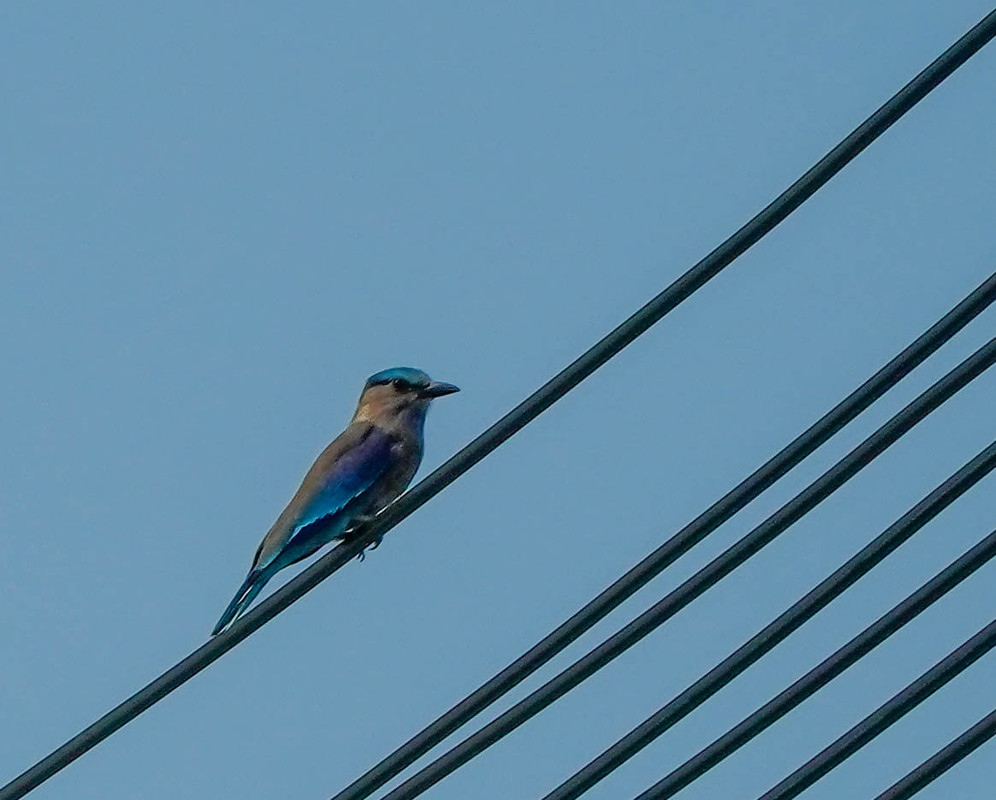

Didn't know it's mouth opened that far....



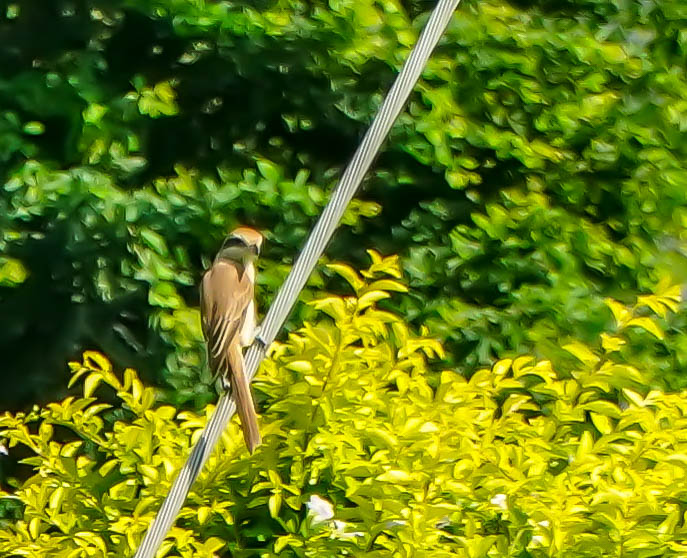


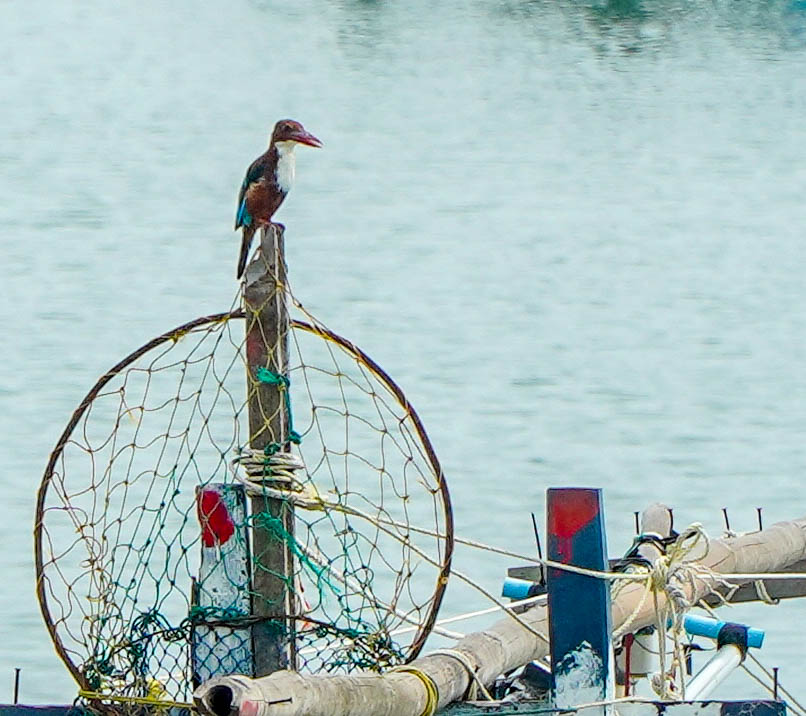



Didn't know it's mouth opened that far....







-
laphanphon
- Guru

- Posts: 787
- Joined: Wed Jun 09, 2004 12:15 am
Re: Birds of Thailand
Went out between downpours yesterday, and a few I haven't gotten before:
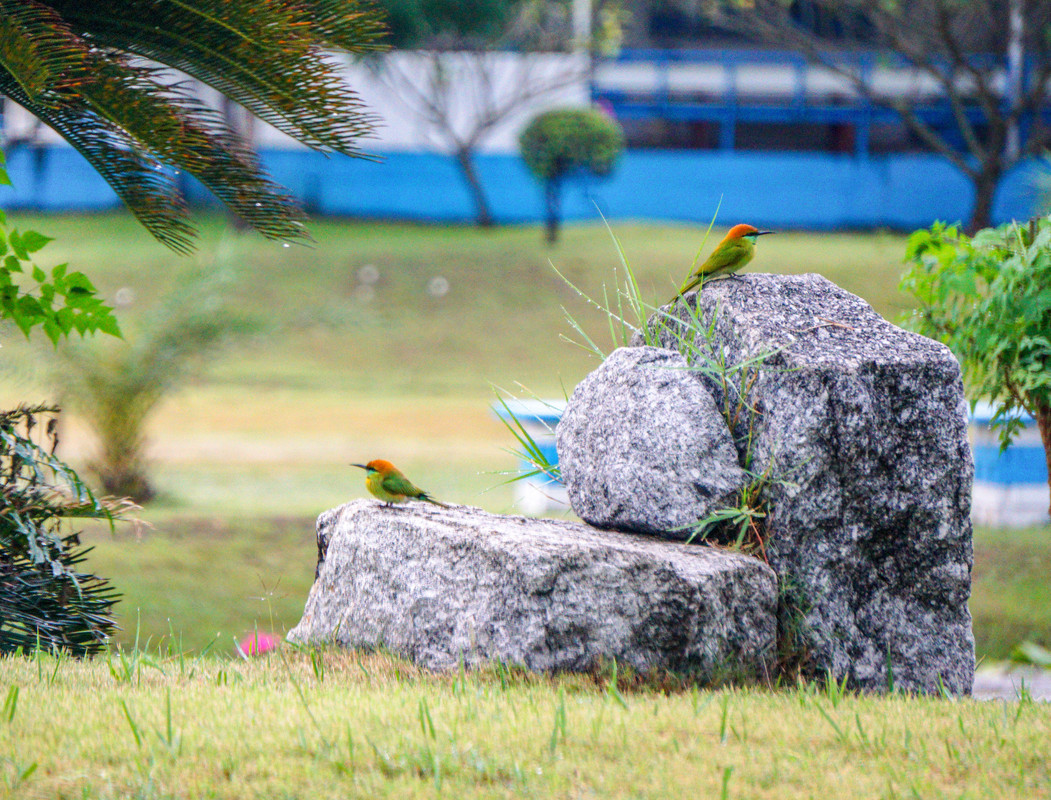
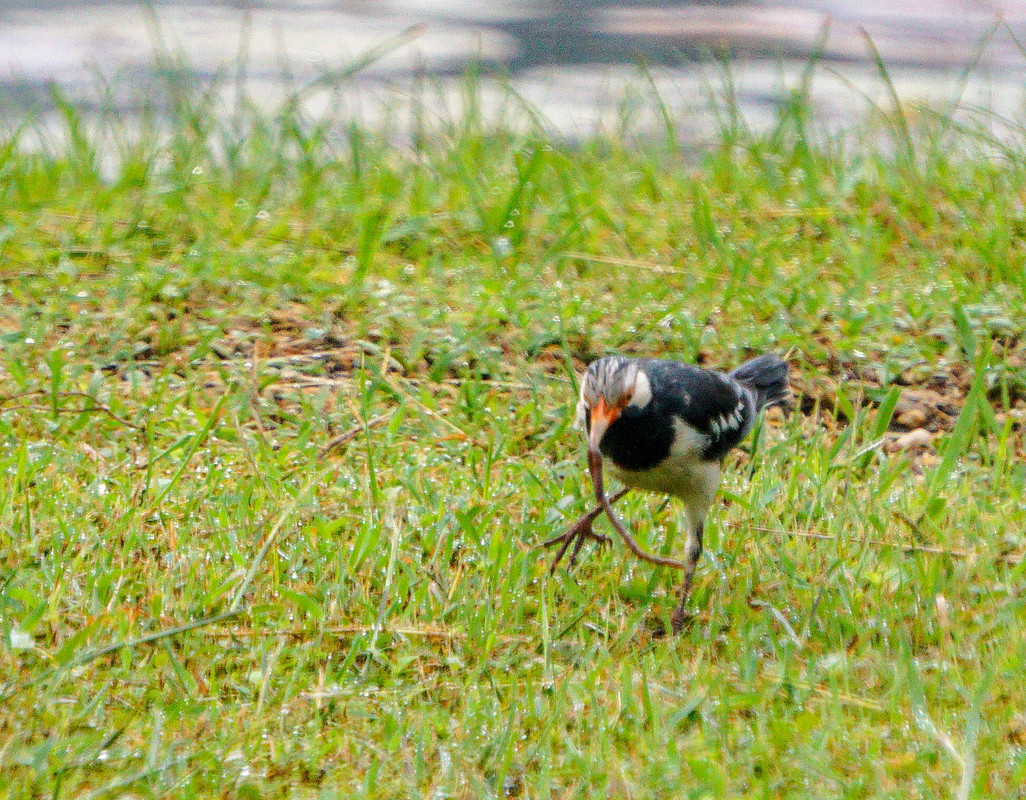
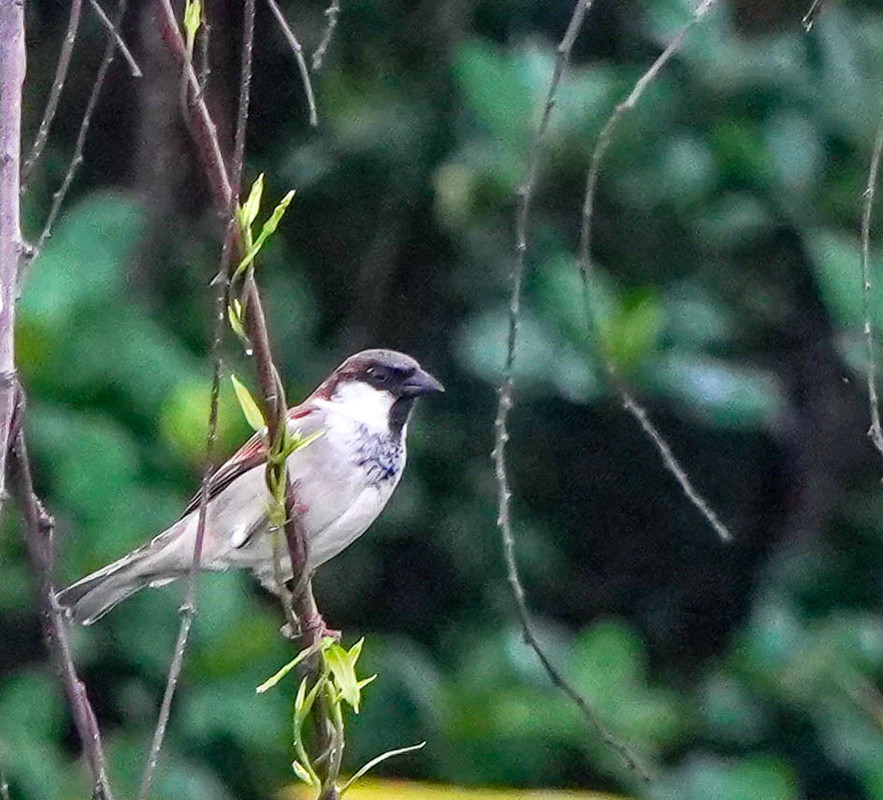
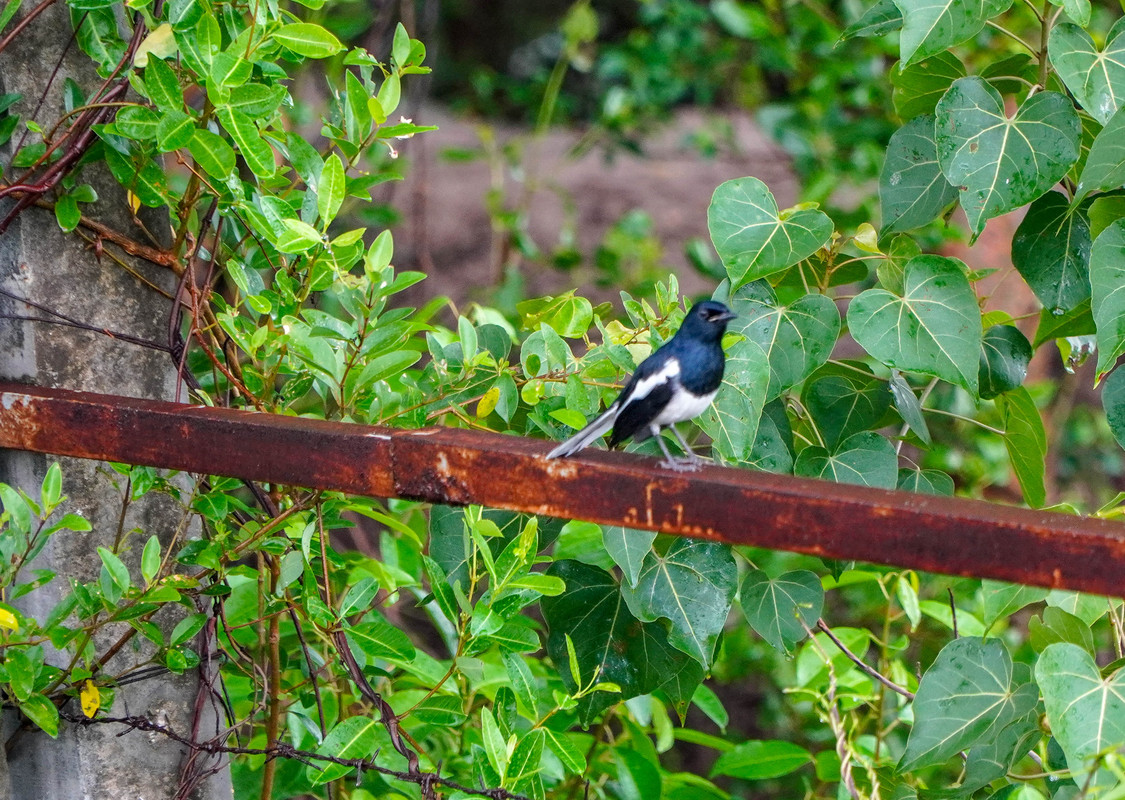




-
laphanphon
- Guru

- Posts: 787
- Joined: Wed Jun 09, 2004 12:15 am
Re: Birds of Thailand
2 new species, haven't noticed before, and that Common Myna, but with a new lens 


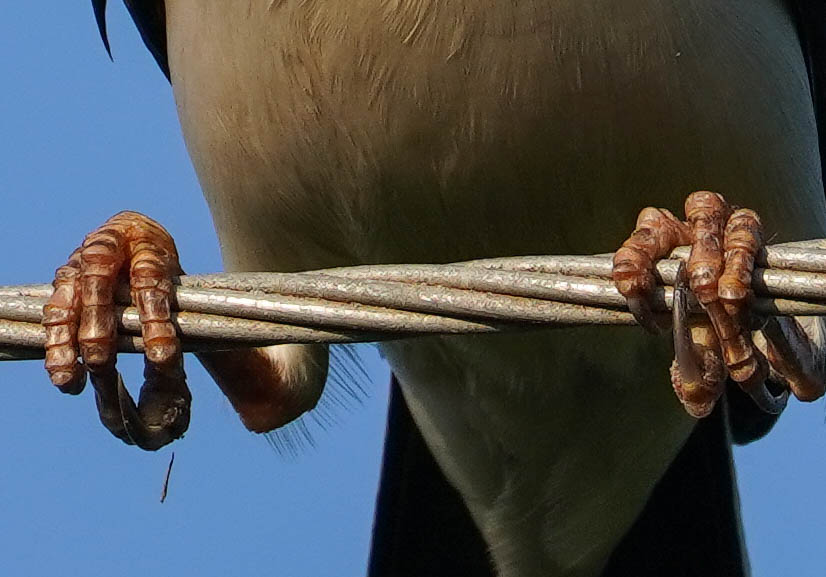

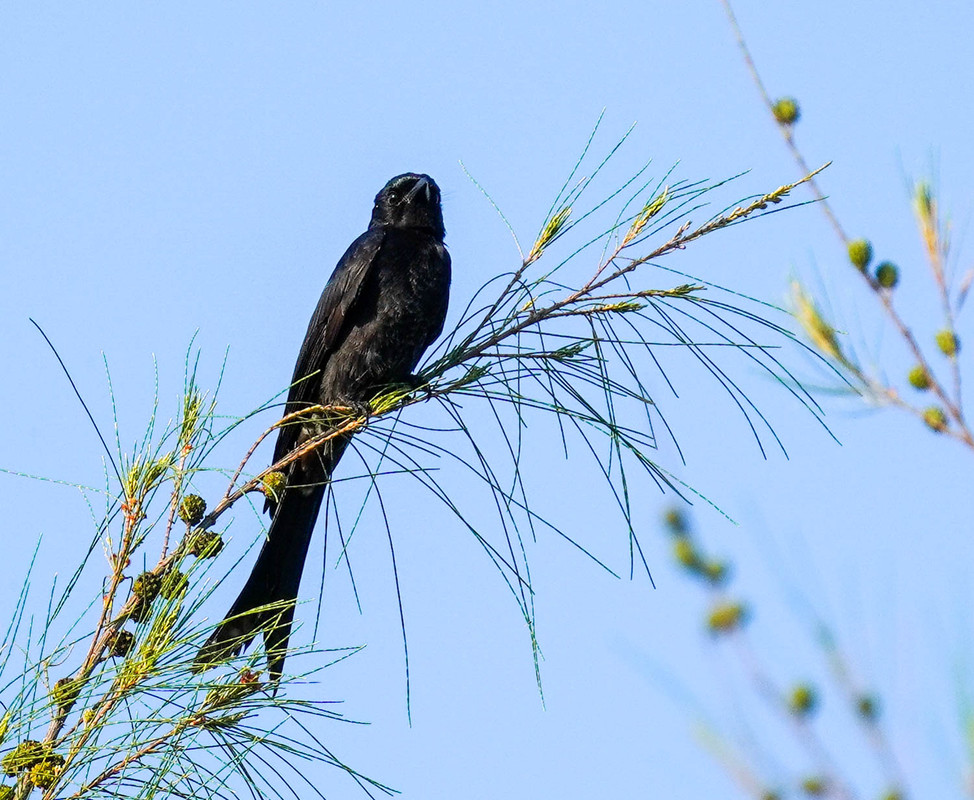









Re: Birds of Thailand
Some really good photos there. The new lens is working!  The grey 4th one down I see a lot of here in the east. Always in pairs though when on our property. They seem especially active now, so perhaps as the cool begins it's nesting season.
The grey 4th one down I see a lot of here in the east. Always in pairs though when on our property. They seem especially active now, so perhaps as the cool begins it's nesting season.
Governments are instituted among Men, deriving their just powers from the consent of the governed. Source
-
laphanphon
- Guru

- Posts: 787
- Joined: Wed Jun 09, 2004 12:15 am
Re: Birds of Thailand
Thanks.
Yea, there was a couple of them. They don't stay still long. I've been noticing a lot of bee-eaters lately, having the greenish body & orange-ish crown / head.
A couple yellow birds at the park, yet to get a snap of, damn fast, and really shy.
Thinking a lot of bird feeders, when house built, now not sure to what to put in them, after seeing this one munching....
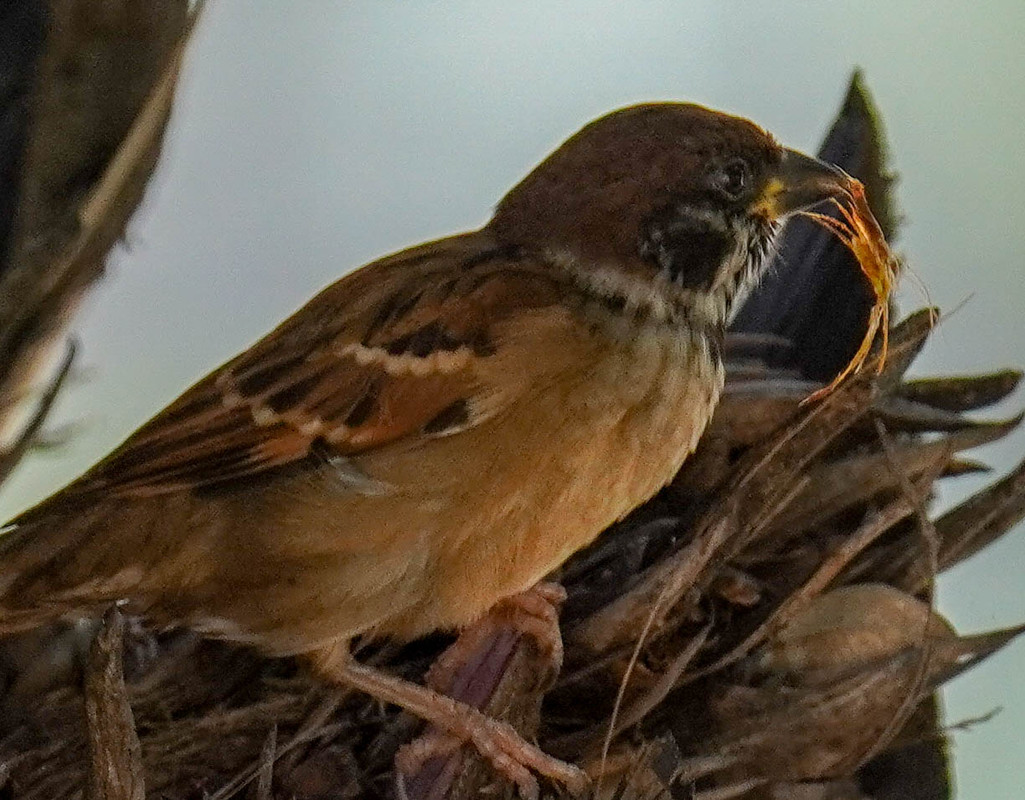
A bunch of sparrows today

Yea, there was a couple of them. They don't stay still long. I've been noticing a lot of bee-eaters lately, having the greenish body & orange-ish crown / head.
A couple yellow birds at the park, yet to get a snap of, damn fast, and really shy.
Thinking a lot of bird feeders, when house built, now not sure to what to put in them, after seeing this one munching....

A bunch of sparrows today

Re: Birds of Thailand
Wouaw so beautiful, you must have a lot of patience to get the right shot and a good camera
Well done and thank you for sharing these great pictures, thoroughly enjoy watching
Well done and thank you for sharing these great pictures, thoroughly enjoy watching


